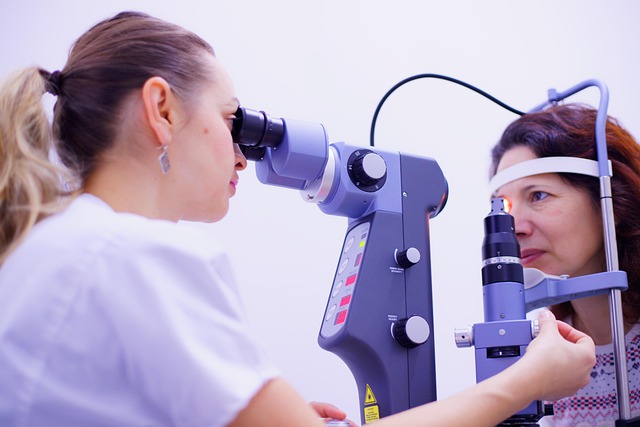Spot Mycosis Fungoides Recognizing Signs for Early Awareness
Mycosis fungoides represents the most common form of cutaneous T-cell lymphoma, a type of cancer that initially affects the skin before potentially spreading to other organs. Early detection plays a crucial role in treatment outcomes, making awareness of initial symptoms essential for patients and healthcare providers alike. This condition often mimics common skin disorders like eczema or psoriasis, leading to delayed diagnosis and treatment.

Understanding Mycosis Fungoides
Mycosis fungoides develops when T-lymphocytes, a type of white blood cell, become malignant and accumulate in the skin. Unlike other forms of lymphoma that primarily affect lymph nodes, this cancer begins in the skin and progresses through distinct stages. The condition typically affects adults over 50, though it can occur at any age. Understanding mycosis fungoides requires recognizing its unique progression pattern, which unfolds over months or years rather than weeks.
The disease follows a predictable course, starting with patches that resemble common skin conditions. These early manifestations often respond temporarily to topical treatments, creating a false sense of improvement. However, the underlying malignant process continues, eventually leading to more obvious signs that prompt proper medical evaluation.
Early Skin Changes
The earliest signs of mycosis fungoides appear as thin, scaly patches that may be red, pink, or darker than surrounding skin. These patches typically develop in areas protected from sun exposure, such as the buttocks, hips, or areas covered by underwear. The patches often have a wrinkled or cigarette paper-like appearance and may be accompanied by mild itching.
Early skin changes frequently get misdiagnosed as eczema, contact dermatitis, or fungal infections. Patients may notice that affected areas feel slightly different in texture compared to normal skin. The patches may appear and disappear over time, creating an irregular pattern that distinguishes them from typical inflammatory skin conditions.
Healthcare providers often perform multiple biopsies during this stage, as early mycosis fungoides can be challenging to diagnose definitively. The patches may respond partially to topical steroids or other treatments, but they typically return once treatment stops.
Progression of Symptoms
As mycosis fungoides advances, the thin patches may develop into thicker, raised plaques. These plaques often become more symptomatic, causing increased itching, burning, or pain. The color may deepen, and the surface may become more irregular or ulcerated. This progression from patch to plaque stage represents a critical transition in the disease course.
In advanced cases, the condition may progress to tumor stage, characterized by large nodules or tumors that can ulcerate and become infected. At this point, the cancer may spread to lymph nodes and internal organs. The progression of symptoms varies significantly between patients, with some experiencing rapid advancement while others maintain stable patch-stage disease for years.
Temperature sensitivity often develops as the condition progresses. Patients may experience increased symptoms in hot weather or after warm showers. Sleep disturbances become common due to persistent itching and discomfort, significantly impacting quality of life.
Risk Factors & Triggers
Several factors may increase the likelihood of developing mycosis fungoides, though the exact cause remains unknown. Age represents the most significant risk factor, with most cases occurring in people over 50. Men develop the condition slightly more frequently than women. Some studies suggest genetic predisposition may play a role, though specific genes have not been identified.
Environmental exposures, including certain chemicals, pesticides, or industrial solvents, have been investigated as potential triggers. However, no definitive environmental cause has been established. Some research suggests that chronic immune system stimulation or suppression might contribute to development, but these connections remain under investigation.
Previous skin trauma or chronic inflammatory conditions in the affected areas may precede mycosis fungoides development in some cases. However, most patients have no identifiable triggering factors, emphasizing the importance of recognizing symptoms regardless of risk factor presence.
When to Consult a Specialist
Persistent skin changes that do not respond appropriately to standard treatments warrant dermatological evaluation. Patches or plaques that continue expanding, changing character, or causing increasing symptoms require professional assessment. Any unusual skin lesions in sun-protected areas should prompt medical consultation, particularly in adults over 40.
Dermatologists with experience in lymphoma diagnosis provide the most appropriate initial evaluation. These specialists can perform proper biopsies and interpret results in the context of clinical presentation. Multiple biopsies may be necessary, as early mycosis fungoides can be subtle and may not show characteristic features in initial samples.
Referral to a dermatopathologist or hematologist-oncologist becomes important once diagnosis is confirmed. These specialists can provide staging evaluation and develop appropriate treatment plans. Early consultation allows for prompt treatment initiation, which significantly improves long-term outcomes and quality of life for patients with mycosis fungoides.
Conclusion
Recognizing the early signs of mycosis fungoides requires understanding its unique presentation and progression patterns. The condition’s tendency to mimic common skin disorders makes professional evaluation essential for persistent or unusual skin changes. Early detection and appropriate specialist consultation provide the best opportunity for effective treatment and optimal outcomes. Awareness of risk factors and symptom progression helps both patients and healthcare providers identify this condition before it advances to more serious stages.
This article is for informational purposes only and should not be considered medical advice. Please consult a qualified healthcare professional for personalized guidance and treatment.




